Europe’s been my second home for years now. My wife’s Austrian, so we spend a couple months there annually…and after exploring 38 countries across the continent, I’ve built a bucket list that goes way beyond the usual postcard stops. Sure, I’ve done the classics (and some of them are on here for a reason), but it’s the unexpected stuff that’s stuck with me the most.
Like dog sledding under the northern lights in Lapland. Swimming in a thermal river in rural Tuscany. Getting lost in an Albanian mountain village where no one spoke English, but everyone offered rakija. That’s the kind of travel I live for.
This list isn’t about ticking off the obvious. It’s about the experiences…some big, some quiet, that remind you why you travel in the first place. Here are 14 cool and bucket-list-worthy things to do in Europe that I’d recommend to anyone looking for a dreamy European getaway.
- 👉 Pro Tip: If there’s one thing you need to do in Europe, I HIGHLY recommend doing this Tuscany day trip from Florence. They bring you to all the iconic sites in the region, from Siena and San Gimignano to Pisa and top Tuscan wineries! This tour is an absolute must-do on a Tuscany itinerary in my opinion.
Top Must-See Places in Europe For Travelers
Planning the ultimate Euro trip? Whether you’re after natural beauty, rich history, or once-in-a-lifetime vibes, here’s a dream-worthy list of Europe’s most unforgettable experiences. Tap any link below to skip to that section.
- Best Coastal City Walls: Dubrovnik’s Old Town, Croatia
- Most Iconic Landmark: The Eiffel Tower, Paris
- Dreamiest Coastal Drive: Amalfi Coast, Italy
- Most Epic Ancient Ruin: Colosseum, Rome
- Top Ancient Temple Complex: The Acropolis, Athens
- Most Charming Urban Waterways: The Canals of Amsterdam
- Best Northern Lights Spot: Reykjavik, Iceland
- Top Alpine Escape: The Swiss Alps, Switzerland
- Most Iconic Art Museum: The Louvre, Paris
- Top Moorish Palace Complex: The Alhambra, Granada
- Most Stunning Ceiling in Europe: The Sistine Chapel, Vatican City
- Best Natural Wonder: The Giant’s Causeway, Northern Ireland
- Best Geothermal Spa: The Blue Lagoon, Iceland
- Most Unreal Waterfalls + Lakes: Plitvice Lakes National Park, Croatia
Here’s my take: start in Italy or France, mix in nature (like the Alps or Iceland), and always leave room for surprises. Europe’s full of magic…and this list is just the beginning.
1. Dubrovnik’s Old Town
Dubrovnik’s Old Town is a bucket list gem that blends medieval magic with coastal beauty. Enclosed by massive stone walls dating back to the 13th century, the entire town feels like a real-life movie set—because it kind of is (yes, Game of Thrones fans, this is King’s Landing). The beauty of Croatia is on full display here.
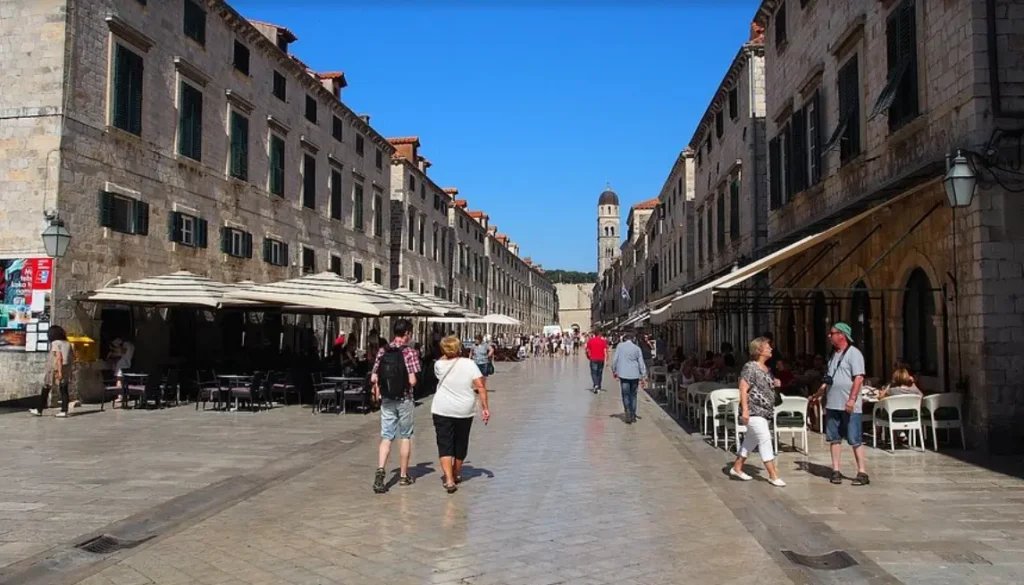
What makes it special? The marble streets, baroque buildings, and orange-tiled rooftops framed by the Adriatic Sea. You can walk the entire city wall in under two hours, with sweeping views over the sea and the Old Port. Highlights include the Rector’s Palace, Sponza Palace, and the Franciscan Monastery’s ancient pharmacy…one of the oldest in Europe. The vibe is cinematic, romantic, and historic all at once.
Insider tip: Arrive early or visit in the shoulder seasons (May or late September) to avoid cruise ship crowds. And don’t skip a kayak tour around the walls at sunset…it’s the most peaceful (and photogenic) view in town. This is one of my favorite attractions in Dubrovnik, hands down.
Stay inside the walls for the full experience, or in nearby Lapad for better prices and a beach vibe.
- Wandering Dubrovnik’s Old Town? This Dubrovnik Old Town walking tour reveals history and hidden gems.
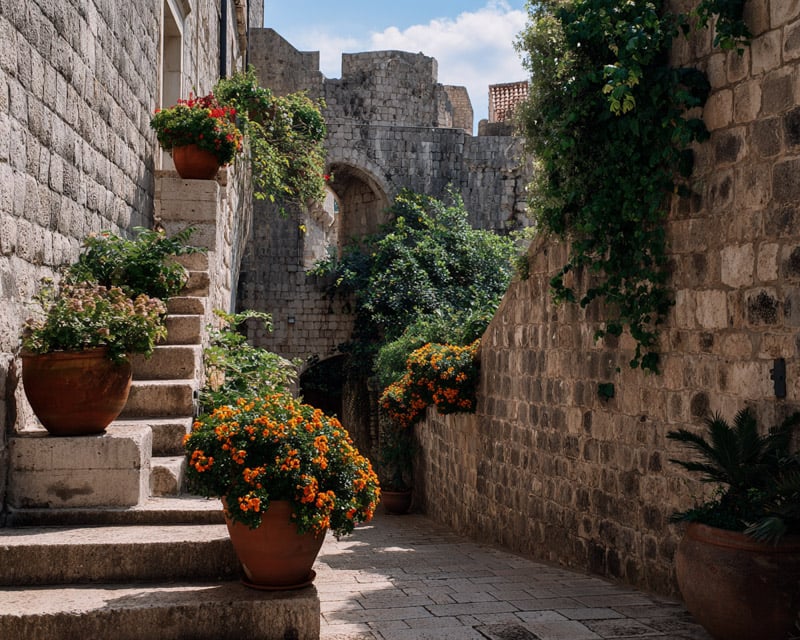
2. The Eiffel Tower, Paris
You can’t visit Paris and skip the Eiffel Tower…it’s popular for a reason. This 1,083-foot iron icon has stood over Champ de Mars since 1889 and still delivers jaw-dropping views from every level. Whether you ride the elevator or climb the stairs to the second floor, the cityscape is totally worth the effort. Sunset is peak magic, but at night, the tower sparkles every hour on the hour—don’t miss that.
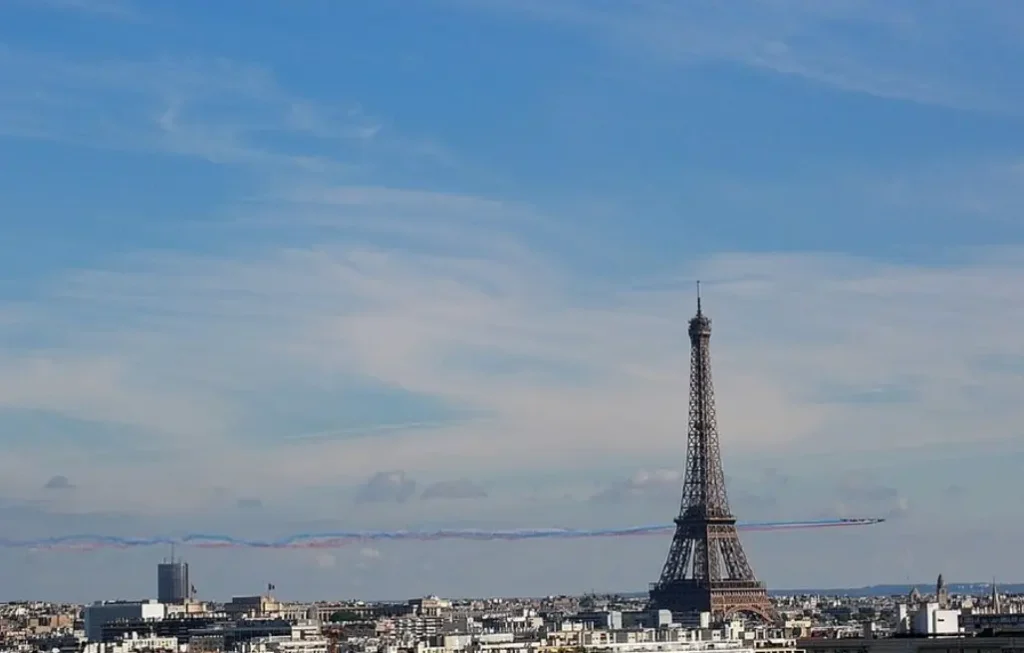
Last time I was there, I grabbed a crepe from a stand nearby and just sat in the park people-watching. No rush, no ticket…just soaking it all in from the lawn. You can also book dinner at 58 Tour Eiffel or another unique restaurant in Paris if you’re feeling fancy. Whether it’s your first time in Paris or your fifth, the Eiffel Tower always holds up. It’s one of those rare places that lives up to the hype.
- Seeing Paris from above? This Eiffel Tower reserved access tour delivers breathtaking city views.
- Read Next: Most Beautiful Cities in Europe

3. Amalfi Coast, Italy
The Amalfi Coast is one of Europe’s dreamiest bucket list destinations. It’s where dramatic cliffs plunge into the sea, colorful villages cling to hillsides, and lemon-scented breezes fill the air. Stretching along southern Italy’s Campania region, it’s famous for its jaw-dropping beauty, scenic drives, and glam-meets-rustic charm. Can you see why this is one of my favorite attractions in Italy?
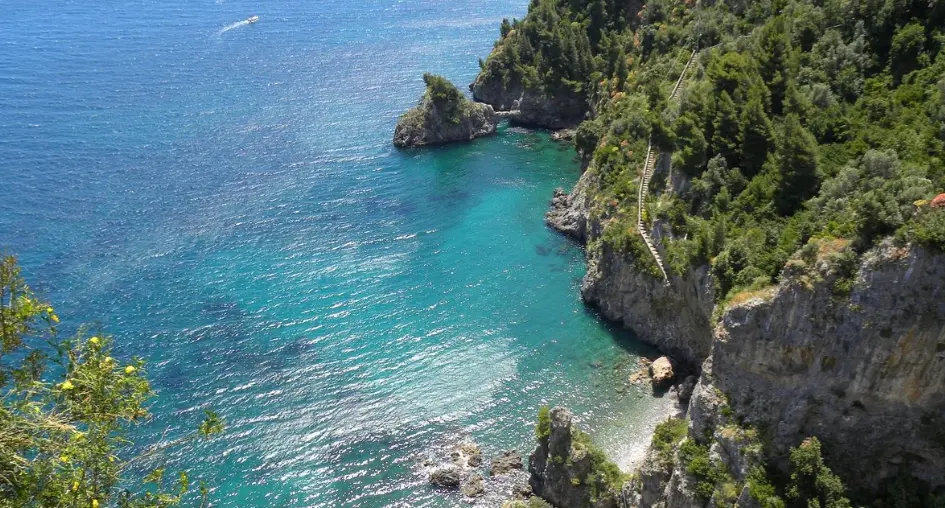
Top spots include Positano (for iconic views and boutique stays), Ravello (known for cliffside gardens and concerts), and Amalfi (the historic heart with its stunning cathedral). Praiano and Minori are quieter gems for those craving a slower pace.
Must-do experiences include cruising the coast by boat, hiking the Path of the Gods, sipping limoncello with a view, and dining cliffside on fresh seafood. For a beach day, Fiordo di Furore and Marina di Praia are unforgettable.
The best time to visit is May to early July or September, when the weather is perfect and the crowds haven’t peaked. Whether you’re after romance, adventure, or just world-class views, the Amalfi Coast delivers it all…and then some.
- My top tip: The Path of the Gods guided hike offers stunning Amalfi Coast cliffside views.
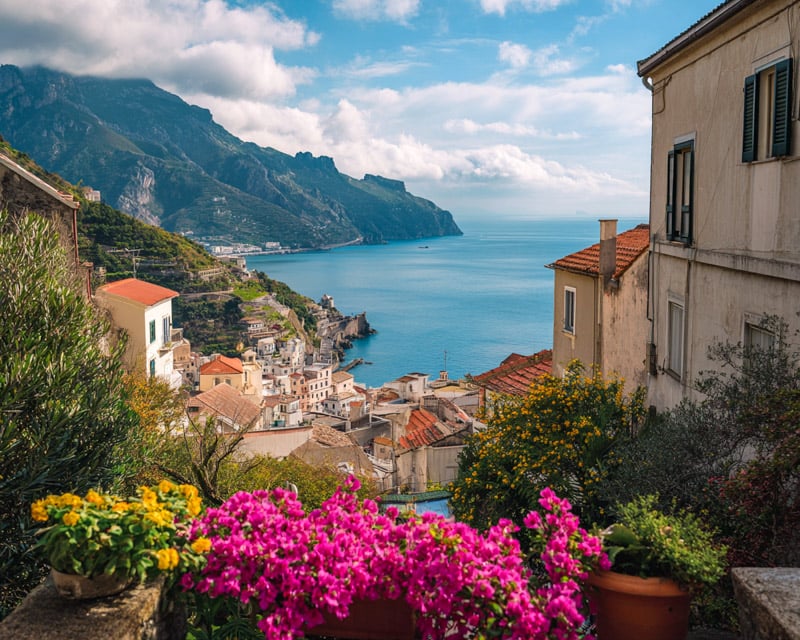
4. Colosseum, Rome
The Colosseum is everything you expect…and somehow even more. Built around 80 AD, this massive Roman amphitheater once held over 50,000 people cheering for gladiators, wild animal hunts, and re-enacted sea battles. Today, it’s one of the most iconic ruins in Rome, and walking through it feels like stepping straight into ancient history.
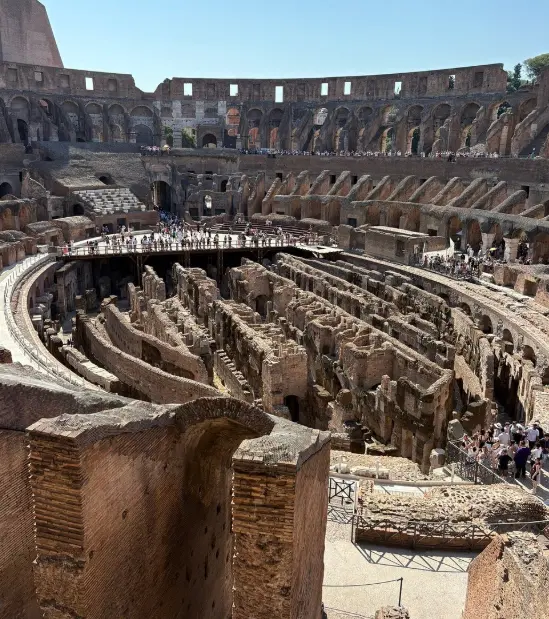
I booked a skip-the-line ticket with a guided tour and was surprised by how much I didn’t know—like how they used elevators to lift animals from the underground chambers. The Roman Forum is right next door, so definitely combine the two. Even if you’re not a history buff, you’ll appreciate the scale and detail of the architecture. It’s touristy, yeah, but worth every second.
Pro tip: go early or late to avoid the worst crowds and heat.
- Step onto the Colosseum arena or underground with this expert guided Rome history tour.

5. The Acropolis, Athens
The Acropolis rises above Athens like a beacon of ancient civilization. At its core is the Parthenon, built in the 5th century BC and dedicated to Athena, the city’s patron goddess. Surrounding it are the Erechtheion, Propylaea, and Temple of Athena Nike—all showcasing classic Greek architecture.
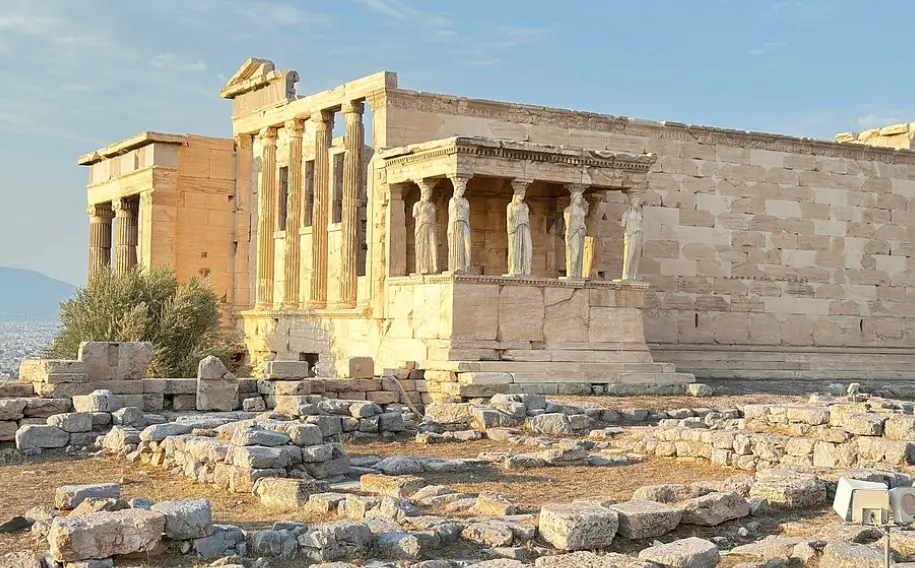
I visited right after a summer storm, and the marble still had rain on it…slick, glowing, and somehow more powerful. The panoramic views of Athens from the top are unforgettable, especially at golden hour. The climb isn’t bad, but bring water and wear sneakers.
Afterward, the Acropolis Museum is just a short walk away and totally worth it. Standing where democracy and philosophy once flourished feels surreal. If you love ruins with serious atmosphere, this one checks every box. Athens doesn’t try to hide its history…and this hill is where it all comes together. If you’re wondering where to go in Greece, add the capital to the top of your list. At the very least, you’ll want to spend a couple days there before heading to the Greek Islands.
- See the Acropolis and Parthenon included in this Athens guided walking tour with expert insights.

6. The Canals of Amsterdam
Amsterdam’s canals aren’t just scenic…they’re part of daily life. The Herengracht, Prinsengracht, and Keizersgracht wrap around the city center like a watery spine, with over 1,500 historic buildings lining their edges. Built during the 17th century, this canal network is now a UNESCO World Heritage Site.
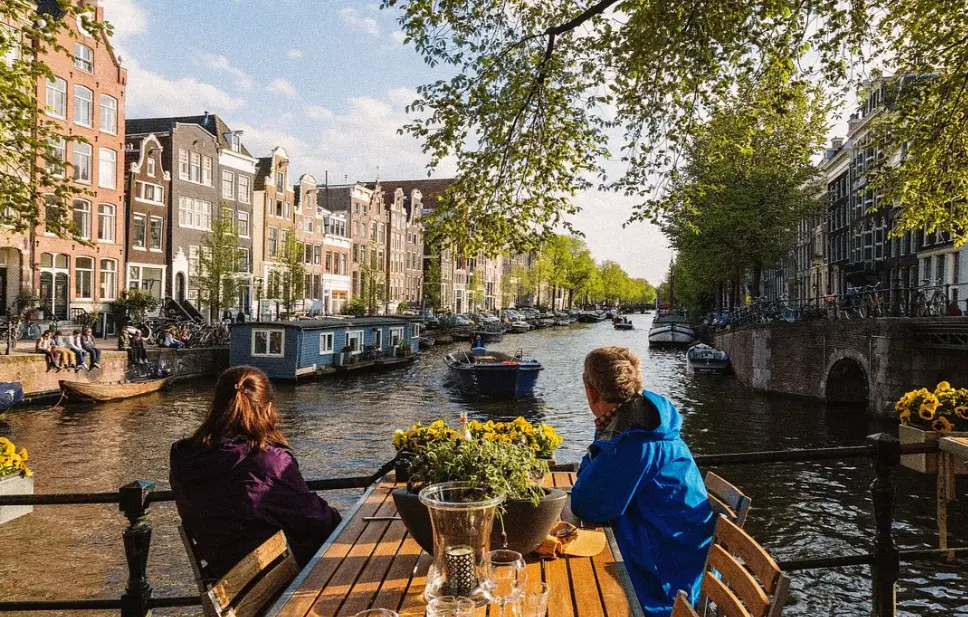
I stayed on a houseboat in Jordaan, and hearing the water lap under me at night was surprisingly relaxing. The best way to see the canals? Take a small boat tour…some come with drinks, others with dinner. Walking is just as rewarding, especially at sunrise when the bridges are quiet.
You’ll pass cute shops, galleries, unique restaurants, and streets that seem frozen in time. The canals bring rhythm to the city and give it a calm, lived-in feel. Whether it’s your first visit or your fifth, drifting through Amsterdam never gets old.

7. The Northern Lights, Reykjavik
Catching the Northern Lights in Iceland is the kind of experience that doesn’t feel real until you’ve seen it yourself. From Reykjavik, it’s easy to join a guided tour that’ll drive you into darker, remote areas for the best viewing. These lights usually appear from September to April and are most visible on clear, cold nights.
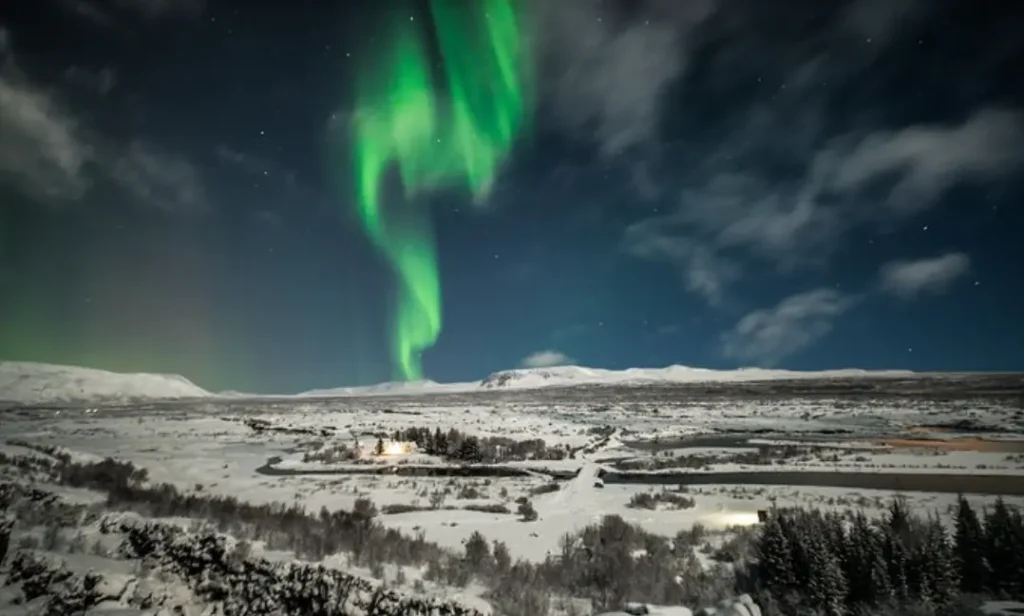
The first time I saw them, we were an hour outside the city when the sky suddenly shifted…green ribbons waving overhead. Total silence. It’s not just beautiful…it’s otherworldly.
I always use the Aurora Forecast app to track solar activity, and it helps a lot. Pro tip: dress in layers, bring a tripod, and be patient. The lights can come and go quickly. Whether you spot them once or catch a full display, this is one of those bucket list moments you’ll never forget.
- Catch the Northern Lights on this Reykjavik small-group tour with hot chocolate included.

8. The Swiss Alps, Switzerland
The Swiss Alps are a dream for anyone who loves nature, adventure, or just jaw-dropping scenery. From snowy peaks to green valleys, this mountain range stretches across southern Switzerland, offering everything from skiing in Zermatt to hiking near Grindelwald and Lauterbrunnen.
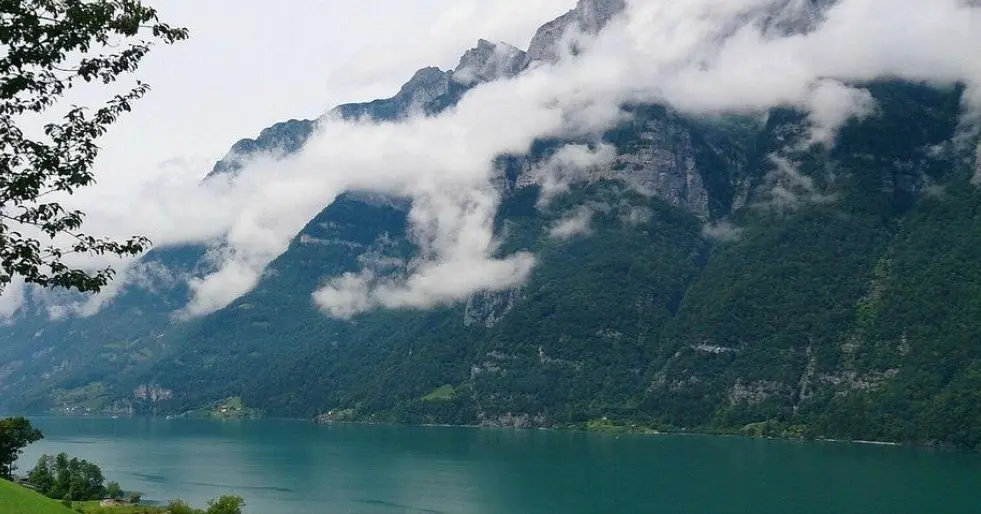
I visited in summer, took a train to Wengen, and hiked the trails around Jungfrau. Cows with bells, wildflowers, and alpine views made it feel like a movie set. You can ride the Glacier Express, explore glacial caves, or just relax at a mountain hut with a plate of rösti. The scenery is wild but peaceful.
Whether you’re in it for winter sports or warm-weather hikes, the Swiss Alps offer something unforgettable. It’s not cheap, but worth every franc. And if you’re into scenic train rides, this is one of Europe’s best spots to hop on board.

9. The Louvre Museum, Paris
Fly to Paris and this is one of the first spots you’ll want to see. The Louvre Museum isn’t just massive…it’s legendary. Located in the former royal palace on the Right Bank, this museum holds some of the world’s most iconic artworks. You’ll see the Mona Lisa, Venus de Milo, and thousands more across its eight curatorial departments.
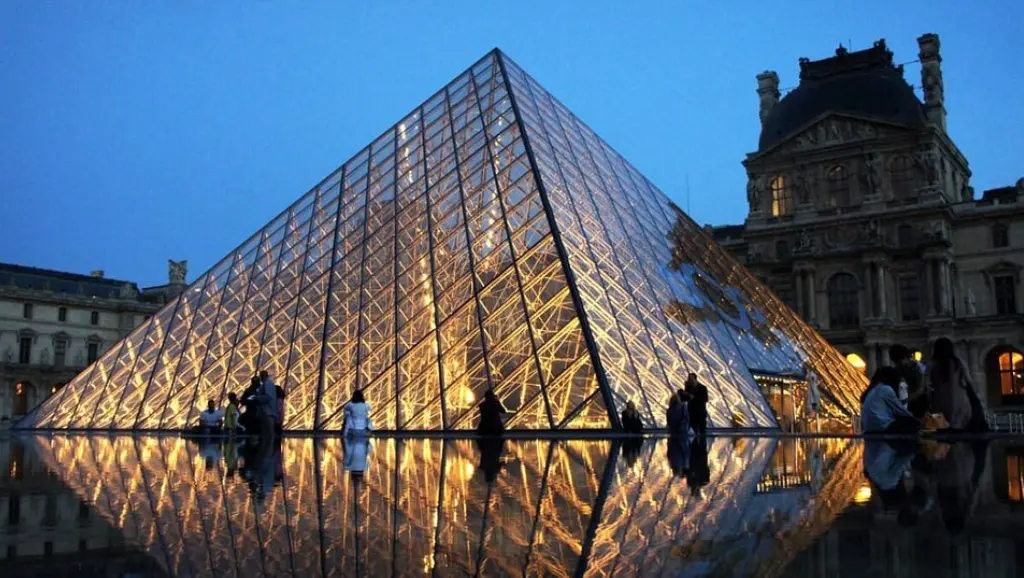
I went in thinking I’d be there for an hour and ended up spending half the day. My tip? Pick a few wings to focus on…trying to see everything is exhausting. The Egyptian Antiquities and Greek and Roman collections were personal highlights. You can download the official app for maps and self-guided tours, as well as some of the best hidden gems in Paris.
Even if you’re not a huge art lover, the building itself—with its grand halls and the glass pyramid—is worth the visit. It’s one of the most important museums in the world, and it truly lives up to the hype. And now far away, you’ll be within walking distance of other iconic sites, as well as Paris’ best nightlife spots.
- Seeing the Mona Lisa? Book this Louvre Museum guided tour with skip-the-line entry.

10. The Alhambra, Granada
The Alhambra in Granada, Spain is a palace complex like no other…think carved stucco walls, peaceful courtyards, and intricate Islamic art. Originally built in the 13th century by the Nasrid Dynasty, the Alhambra blends Moorish architecture with later Christian additions like the Palace of Charles V.

I booked a morning tour and was blown away by the detail in the Court of the Lions and the peaceful vibe in the Generalife Gardens. You’ll want to reserve tickets in advance—it’s one of Spain’s most visited sites. The views over Granada and the Sierra Nevada mountains are a bonus.
Don’t rush this visit. Take your time walking through the arches, fountains, and tiled hallways. The Alhambra isn’t just a beautiful highlight of Andalusia…it’s layered with history and culture, and easily one of the most atmospheric places you’ll visit in Europe.
- Exploring the Alhambra? Join this Alhambra & Generalife guided tour with skip-the-line entry.

11. The Sistine Chapel, Vatican City
The Sistine Chapel inside Vatican City is one of the most iconic art experiences you’ll find in Europe. Known best for Michelangelo’s ceiling frescoes—especially The Creation of Adam—this chapel is packed daily with people staring straight up in silence.
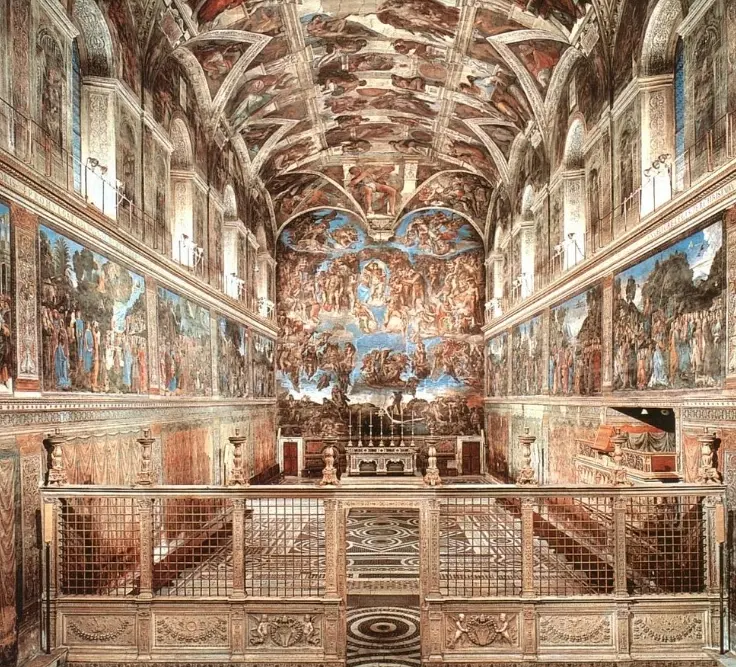
When I finally saw it in person, I understood the hype. The colors, the scale, the detail…it’s overwhelming in the best way. You’ll go through the Vatican Museums first, which are worth the time on their own. The hallways are filled with tapestries, sculptures, and more Renaissance masterpieces.
You can’t take photos in the chapel, but honestly, that helped me just focus and appreciate it. Arrive early if you can, or book a skip-the-line tour. Whether you’re religious or not, the artistry here is next-level. If you’re in Rome, this side trip across the border into the world’s smallest country is a must.
- My top tip: Enjoy a smooth, guided visit with this Vatican Museums & Sistine Chapel skip-the-line tour.

10. The Giant’s Causeway, Northern Ireland
The Giant’s Causeway in Northern Ireland feels like something from a fantasy novel. This UNESCO World Heritage Site is made up of around 40,000 interlocking basalt columns formed by volcanic activity, but the legends say it was built by giants.
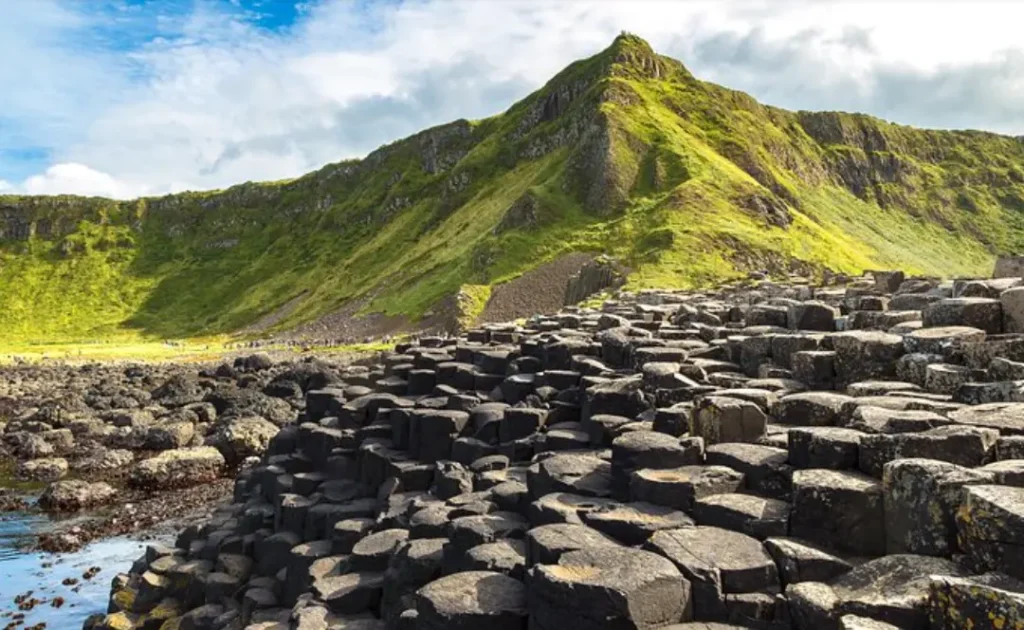
Walking out onto those hexagonal stones feels surreal. I went on a windy day, and the crashing waves made it even more dramatic. There’s a solid visitor center with geology info and local myths, but I preferred exploring the site itself. Wear good shoes…it’s slippery in spots.
The nearby Causeway Coast Way offers amazing hiking if you want to extend your visit. There’s nothing quite like it in Europe. Whether you believe the science or the stories, it’s one of the coolest natural landmarks on the continent—and one you’ll remember long after your trip to Northern Ireland ends.
- My recommendation: Experience the hexagonal stones on this Giant’s Causeway day trip from Belfast.

11. The Blue Lagoon, Iceland
If you’re flying into Keflavík Airport, make Blue Lagoon your first or last stop…it’s only about 20 minutes away. This geothermal spa, set in a lava field, is known for its milky-blue water rich in silica and minerals. It’s an absolutely beautiful place in Iceland where you can float for hours and lose track of time.
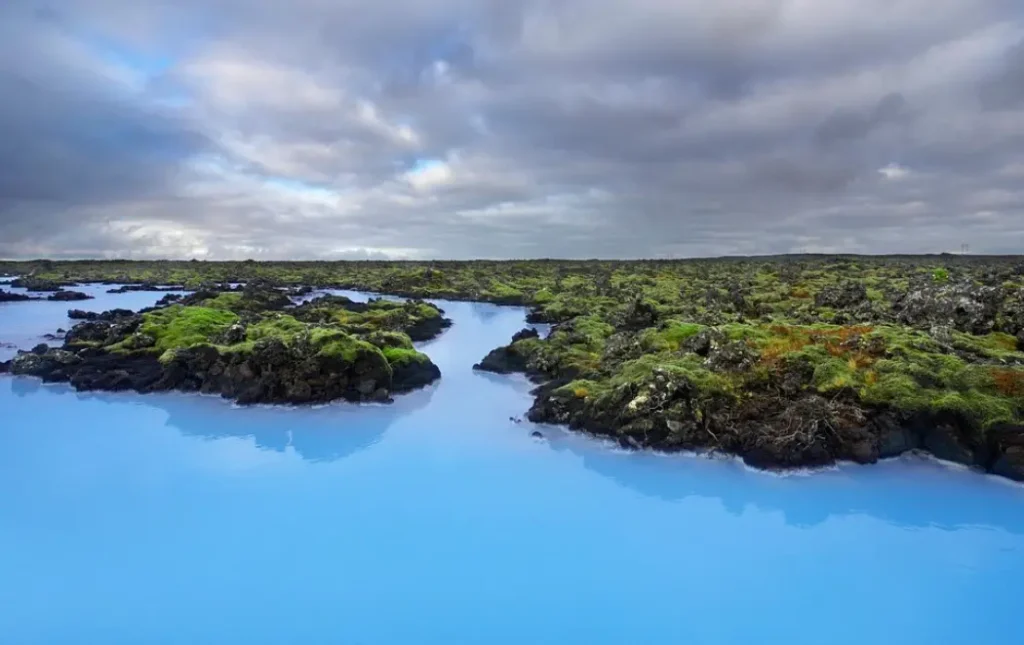
I went straight after a red-eye flight, and it was the perfect jet lag cure. The water’s warm year-round, and the silica masks are a fun touch (also great for your skin). There’s an in-water bar, a sauna, and several restaurants on-site. It’s touristy, sure, but still totally worth it.
Book in advance, as it often sells out. And if it’s full, Sky Lagoon is a fantastic backup nearby. Whether you’re in Reykjavik for a stopover or a longer trip, don’t skip this spa experience.
- Recharge in the soothing geothermal waters with this Blue Lagoon Iceland entry with transfer.

14. Plitvice Lakes National Park, Croatia
Plitvice Lakes National Park in Croatia is like walking through a dream. This UNESCO World Heritage Site features 16 turquoise lakes connected by waterfalls and wooden boardwalks. The water is crystal clear, and the changing shades (from teal to emerald) are unreal. For these reasons, it’s one of the coolest things to see and do in Croatia.
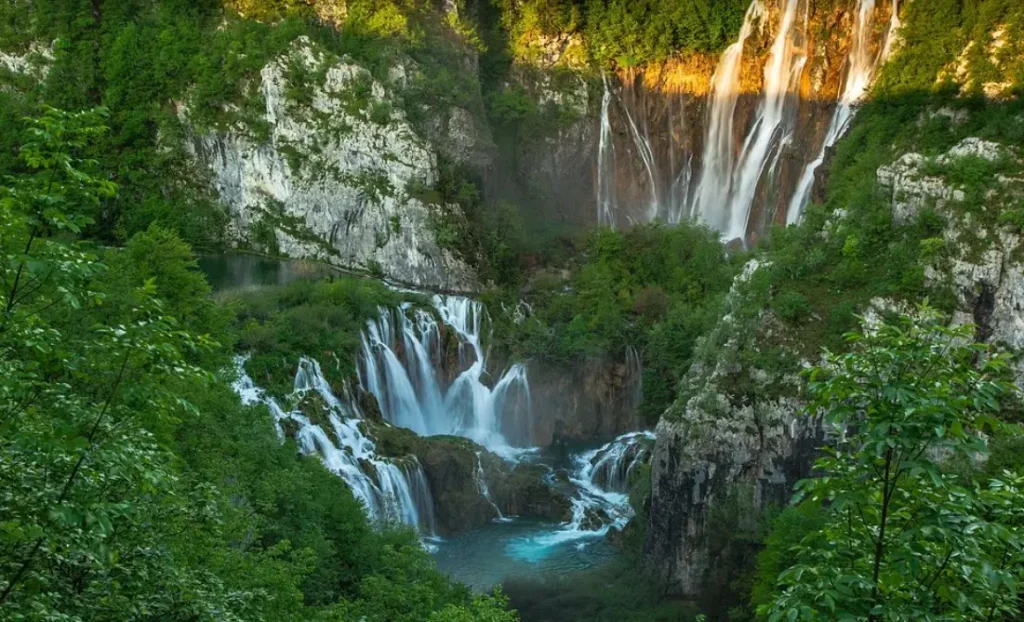
I visited in early fall, and the leaves were just starting to turn. Fewer crowds, cooler temps, and incredible photo ops. You can explore on foot or take the park’s electric boats and shuttle trains to cover more ground. It’s easy to spend a whole day here without even realizing it.
Swimming isn’t allowed in Plitvice, but nearby Krka National Park offers a similar vibe with swimming spots. If you’re road-tripping through the Balkans, this stop is a must. Bring snacks, wear comfortable shoes, and get ready to be blown away by one of Europe’s most stunning natural landscapes.
- Wandering through waterfalls? Secure your Plitvice Lakes National Park admission ticket for hassle-free entry.
- Read Next: ETIAS Launch Delayed for European Travel






